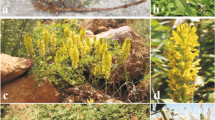Abstract
Acanthamoeba has 22 genotypes with the T4 genotype being the main causative agent of amoebic granulomatous encephalitis and keratitis. Because the molecular mechanisms of the immune defenses of neutrophils and macrophages against histoparasites are based on oxidative stress, parasites may rely on their antioxidant systems to preclude immune defenses. Therefore, understanding of the effect of oxidative stress on vital characteristics of Acanthamoeba castellanii (T4 genotype) and the antioxidant defense responses of Acanthamoeba to oxidative status will cast light on immune cell-parasite interactions. Acanthamoeba T4 cells were cultured in RPMI-1640 medium containing different concentrations of hydrogen peroxide (H2O2). The survival of Acanthamoeba was evaluated by MTT assay and the IC50 concentration was calculated. The total antioxidant capacity (TAC) of the parasite was determined by the cupric reducing antioxidant capacity (CUPRAC) method. Malondialdehyde (MDA) as a marker of lipid peroxidation, protein carbonyl content as a measure of oxidized protein, total thiol (–SH) groups present on proteins as a major source of cellular antioxidants, and total oxidant status (TOS) were evaluated by colorimetric methods. The reactive oxygen species level increased markedly after induction of oxidative stress by the treatment of Acanthamoeba T4 with H2O2. Exposure to H2O2 also significantly increased the MDA and protein carbonyl content. The TOS level and total thiol groups also increased in the treated group compared to those in untreated parasites, although the results were not statistically significant. The TAC level was found to be significantly higher in H2O2-treated parasites, confirming that the parasite fosters its total antioxidant capacity to overcome oxidative conditions. This study showed that under oxidative stress, the defense reactions of the parasite are in part mediated by increasing its antioxidant activity, which is important for the survival of the parasite.





Similar content being viewed by others
References
Almeida B et al (2013) Leishmaniasis causes oxidative stress and alteration of oxidative metabolism and viability of neutrophils in dogs. Vet J 198(3):599–605
Apak R, Güçlü K, Özyürek M, SEn K˙ r, Altun M (2005) Total antioxidant capacity assay of human serum using copper (II)-neocuproine as chromogenic oxidant: the CUPRAC method. Free Radic Res 39(9):949–961
Baig AM (2014) Granulomatous amoebic encephalitis: ghost response of an immunocompromised host? J Med Microbiol 63(12):1763–1766
Baig AM (2015) Pathogenesis of amoebic encephalitis: are the amoebae being credited to an ‘inside job’ done by the host immune response? Acta Trop 148:72–76
Christov A, Hamdheydari L, Grammas P (2003) Detection of reactive oxygen species by flow cytometry. Methods in Biological Oxidative Stress:175–184
Colombo G, Clerici M, Garavaglia ME, Giustarini D, Rossi R, Milzani A, Dalle-Donne I (2016) A step-by-step protocol for assaying protein carbonylation in biological samples. J Chromatogr B 1019:178–190
De Jonckheere JF (1991) Ecology of Acanthamoeba. Rev Infect Dis 13(Supplement_5):S385–S387
Di Gregorio C, Rivasi F, Mongiardo N, De Rienzo B, Wallace S, Visvesvara G (1992) Acanthamoeba meningoencephalitis in a patient with acquired immunodeficiency syndrome. Arch Pathol Lab Med 116(12):1363–1365
Erel O (2005) A new automated colorimetric method for measuring total oxidant status. Clin Biochem 38(12):1103–1111
Eroğlu F, Evyapan G, Koltaş İS (2015) The cultivation of Acanthamoeba using with different axenic and monoxenic media. Middle Black Sea. J Health Sci 1(3):13–17
Kim J-Y, Na B-K, Song K-J, Park M-H, Park Y-K, Kim T-S (2012) Functional expression and characterization of an iron-containing superoxide dismutase of Acanthamoeba castellanii. J Parasitol Res 111(4):1673–1682
Kong H-H, Kim T-H, Chung D-I (2000) Purification and characterization of a secretory serine proteinase of Acanthamoeba healyi isolated from GAE. J Parasitol 86(1):12–17
Mandal G, Wyllie S, Singh N, Sundar S, Fairlamb A, Chatterjee M (2007) Increased levels of thiols protect antimony unresponsive Leishmania donovani field isolates against reactive oxygen species generated by trivalent antimony. Parasitology 134(12):1679–1687
Mosmann T (1983) Rapid colorimetric assay for cellular growth and survival: application to proliferation and cytotoxicity assays. J Immunol Methods 65(1–2):55–63
Mosser D, Brittingham A (1997) Leishmania, macrophages and complement: a tale of subversion and exploitation. Parasitology 115(7):9–23
Neelam S, Niederkorn JY (2017) Focus: infectious diseases: pathobiology and immunobiology of Acanthamoeba keratitis: insights from animal models. Yale J Biol Med 90(2):261–268
Olson BJ, Markwell J (2007) Assays for determination of protein concentration. Curr Protoc Protein Sci:3.4. 1–3.4. 29
Ozbilge H, Aksoy N, Kilic E, Saraymen R, Yazar S, Vural H (2005) Evaluation of oxidative stress in cutaneous leishmaniasis. J Dermatol 32(1):7–11
Pabón A, Carmona J, Burgos LC, Blair S (2003) Oxidative stress in patients with non-complicated malaria. Clin Biochem 36(1):71–78
Riddles PW, Andrews RK, Blakeley RL, Zerner B (1983) Jack bean urease VI. Determination of thiol and disulfide content: reversible inactivation of the enzyme by the blocking of the unique cysteine residue. Biochim Biophys Acta Protein Struct Mol Enzymol 743(1):115–120
Sacks D, Sher A (2002) Evasion of innate immunity by parasitic protozoa. Nat Immunol 3(11):1041–1047
Schafer FQ, Buettner GR (2001) Redox environment of the cell as viewed through the redox state of the glutathione disulfide/glutathione couple. Free Radic Biol Med 30(11):1191–1212
Schmid-Hempel P (2009) Immune defence, parasite evasion strategies and their relevance for ‘macroscopic phenomena’ such as virulence. Philos Trans R Soc Lond Ser B Biol Sci 364(1513):85–98
Toney DM, Marciano-Cabral F (1998) Resistance of Acanthamoeba species to complement lysis. J Parasitol 84:338–344
Walochnik J, Obwaller A, Haller-Schober E-M, Aspöck H (2001) Anti-Acanthamoeba IgG, IgM, and IgA immunoreactivities in correlation to strain pathogenicity. J Parasitol Res 87(8):651–656
Woyda-Ploszczyca A, Koziel A, Antos-Krzeminska N, Jarmuszkiewicz W (2011) Impact of oxidative stress on Acanthamoeba castellanii mitochondrial bioenergetics depends on cell growth stage. J Bioenerg Biomembr 43(3):217–225
Author information
Authors and Affiliations
Corresponding author
Rights and permissions
About this article
Cite this article
Motavalli, M., Khodadadi, I., Fallah, M. et al. Effect of oxidative stress on vital indicators of Acanthamoeba castellanii (T4 genotype). Parasitol Res 117, 2957–2962 (2018). https://doi.org/10.1007/s00436-018-5992-6
Received:
Accepted:
Published:
Issue Date:
DOI: https://doi.org/10.1007/s00436-018-5992-6




